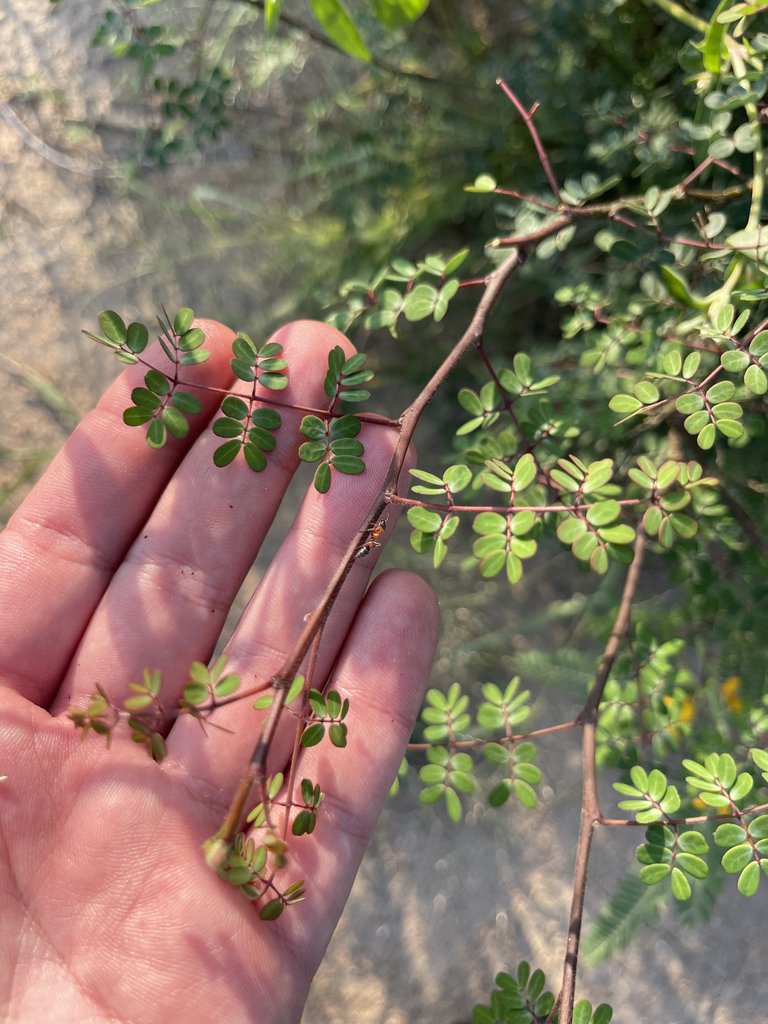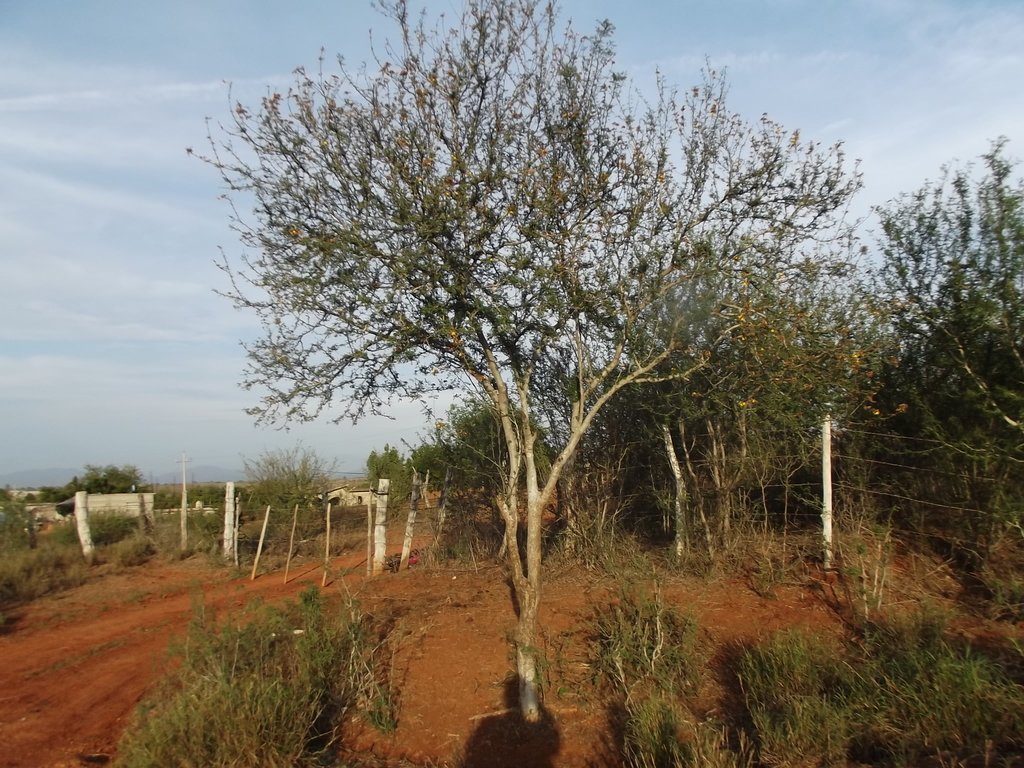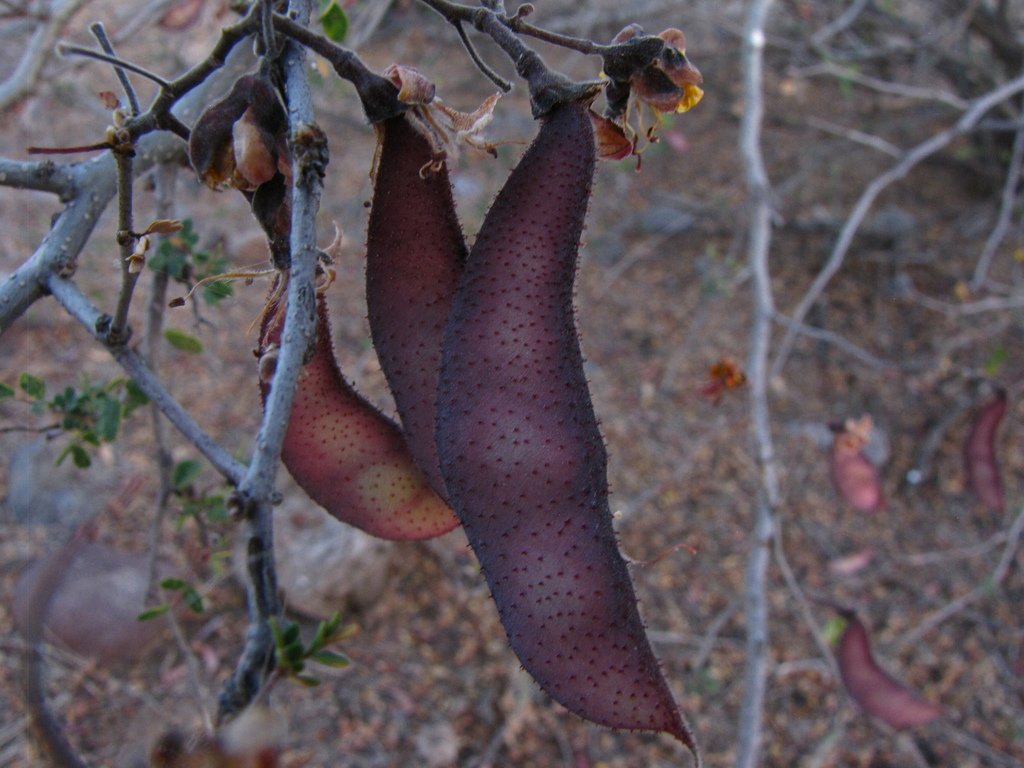Palo Piojo
Erythrostemon palmeri
Family: Fabaceae
OTHER NAMES
Spanish: iguaniche, polilla
CHARACTERISTICS
Large deciduous shrub or small tree to 15-24’ tall. Pea-shaped yellow flower in warm weather followed by legume pods. This plant is sometimes confused with Piojito, Coulteria pumila, another former Caesalpinia.
LANDSCAPE USE
Screening shrub or small tree.
GROWING CONDITIONS
AN EXPLANATION OF TERMS USED
SUN full sun
WATER moderate to low
SOIL not picky, but well-drained
HARDINESS hardy to about 20°F
BASIN high zone
CONTAINER does moderately well in containers but will not attain full size
NUTRITION low
MAINTENANCE very little
ECOLOGY
Flowers are visited by bees, butterflies, and other nectar-seeking insects. Granivorous birds eat the seeds.
ETHNOBOTANY
The wood has been used by indigenous peoples for harpoon shafts, bows, and other articles. The red sap has been used for painting. The common name palo piojo refers to the lenticels on the bark (piojo= lice).
NATURAL DISTRIBUTION
Native to parts of Sonora and Sinaloa, Mexico, in the Sonoran Desert, thornscrub, and tropical dry forest where the plants are commonly found on slopes and in valleys.
TAXONOMY AND NAME
This plant is in the Fabaceae, the legume family. The genus Erythrostemon has 33 species in tropical & subtropical America.
Formerly known as Caesalpinia palmeri.
The genus name derives from the greek erythro meaning red, and stemon, Greek for stamen. The species epithet palmeri honors Edward Palmer (1829-1911), a self-taught botanist who emigrated to the United States from Britain at the age of 21 and traveled extensively throughout the southwestern United States and Mexico.
The foliage of Erythrostemon palmeri is much finer than the related E. mexicanus. It also has reddish new woody growth. Photo by Glenn Ehrenberg, iNaturalist
This plant gets its common name (Palo Piojo) from the lenticels on the trunk (the spanish name translates to "lice tree". Photo by arviltatu, iNaturalist
Plants in cultivation usually get pruned up a bit. Photo by J. Fernando Pío León, iNaturalist
The flowers can occur anytime in warm weather, though most heavily in spring, photo by Manuel Magaña, iNaturalist
The seed pods will dry and eventually violently dehisce (spit out their seeds), photo by Barbarella, iNaturalist
The pods after they've dried and spit their seeds. Photo by Augusto Olmos Mercado, iNaturalist
Plants are shrubby before they form arborescent shapes (treelike). In the wild they have a much longer dormancy because they are drought deciduous. In cultivation they are often much greener. Photo by Barbarella, iNaturalist








